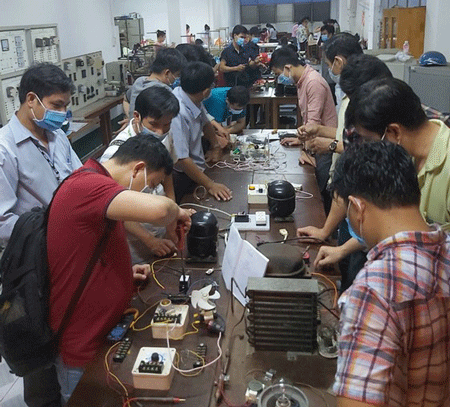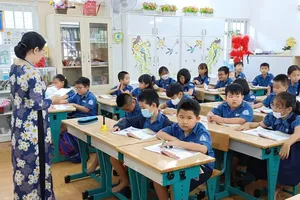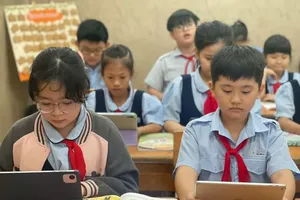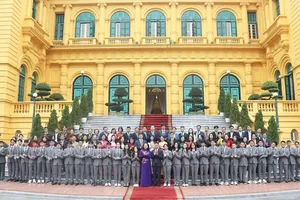
In the world, it has seen that countries with strong community-based enterprises will develop vocational education system and have highly skilled labor force.
It could be said that laborers need to improve their skills rises from their companies’ development orientation. Enterprises will verify skills and criteria for laborers upon recruitment.
Enterprises are usually proactive to work out their manpower development strategies to meet its goal; therefore, enterprises will adopt different solutions to train its workforce in connection with vocational training institutions.
Therefore, vocational schools should train laborers upon enterprises’ demand or in other words, enterprises are customers of schools which should understand and meet enterprises’ new and emerging requirements for design of curriculum, investment in facilities and teaching equipment as well as development of teaching staff.
Wanting to achieve its strategies, enterprises must connect with schools to express their desire in training workers as well as give opinions to training curriculum and receive lecturers and student trainees.
On the opposite, schools should work forward enterprises’ strategies by establishing connection with enterprises; for instance, they should regularly organize meetings with enterprises to exchange opinions, send teachers and students to enterprises to grip training demand of enterprises.
Though there are governmental policies to support companies in labor training, most businesses are not interested since it is not practical. Moreover, the money granted by the government for students and lecturers’ research works, teaching staff development and facility investment has been too small because it has not taken the connection between enterprises and schools into account.
As a result, several finely-built schools find it hard to attract students and their graduates can’t satisfy enterprises’ demand; this will hinder schools’ future development.
In addition to lack of connection between schools and enterprises, vocational training schools suffer pressure from public and private universities which have been trying to attract more learners as expansion of enrolment quotas lately.
Economic growth could decline if laborers can’t meet demand of enterprises; hence, education has been identified as an important determinant of economic growth. The fourth industrial revolution or “Industry 4.0”, as the digital makeover has come to be known, requires employees to upskill to remain relevant.
Accordingly, schools are facing big challenges requiring them to change thoroughly from curriculum design, facility investment to lecturer improvement.
To promote connection between enterprises and schools, the government should do much more including adopting policies to support vocation training programs. Simultaneously, distributors of state budget must consider support for new vocational training programs to meet the labor market and digital transformation as top priority.
Governmental supports should be given to private and public schools without discrimination; provided that, recipients of support can meet the requirements.
In addition, vocational training schools must be forced to become self-financing facilities because only autonomy promotes dynamic spirit, creativeness and innovation in the delivery of educational services.
Presently, state budget granted for vocational education is big but its effectiveness is still limited. A few enterprises have shown their indifferent behaviors to state budget-funded training programs because of doubts of programs’ quality since disbursement of money is performed by unprofessional agencies.
























